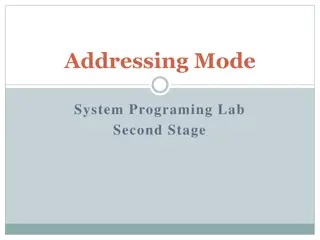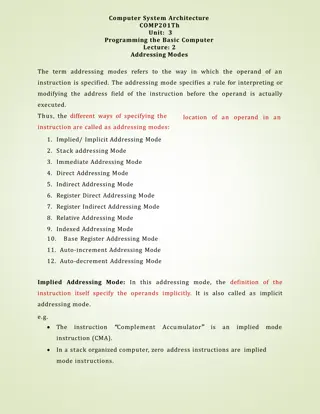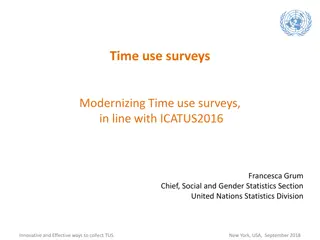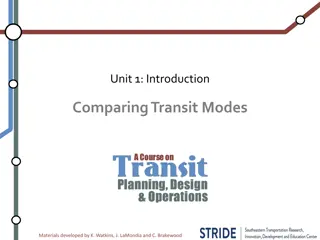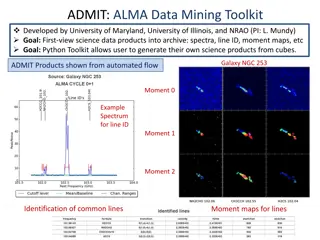Understanding Modes in Data Analysis
Explore the concept of modes in data analysis through examples like ice-cream sales and mathematical connections to fashion. Learn about unimodal, bimodal, and multimodal datasets and how to identify modes effectively. Discover the significance of modes in making decisions and solving real-world problems.
Uploaded on Sep 19, 2024 | 0 Views
Download Presentation

Please find below an Image/Link to download the presentation.
The content on the website is provided AS IS for your information and personal use only. It may not be sold, licensed, or shared on other websites without obtaining consent from the author. Download presentation by click this link. If you encounter any issues during the download, it is possible that the publisher has removed the file from their server.
E N D
Presentation Transcript
Breaking the code Making decisions
La Mode Mode comes from the French word La Mode meaning Fashionable Can you see any connections between mode in Mathematics and fashionable ? reSolve: Mathematics by Inquiry 2
Ice-cream flavours ordering Mr Vanilla s ice-cream truck sells five flavours of ice-cream When ordering more ice-cream, would you order the same amount of each flavour? 3
Ice-cream sales flavours Mr Vanilla records his ice-cream sales for one day: Flavour Vanilla Chocolate Strawberry Mint Coffee Sold 30 80 21 32 10 From this data, he determined the modal flavour sold is chocolate. He also determined that this data set was unimodal. Self-explanation prompts: 1. How did Mr Vanilla determine the mode? 2. What could unimodal mean? 4
Ice-cream sales toppings Mr Vanilla also records his topping sales for one day also: Flavour Sprinkles Flake Nuts Fruit Milo Lollies Sold 21 4 21 13 10 7 From this data, he determined the modal toppings sold are Sprinkles and Nuts. He also determined that this data set was bimodal. Self-explanation prompts: 1. How did Mr Vanilla determine the mode? 2. What could bimodal mean? 5
How many modes? (1, 2, 3, 4, 5, 6) Uniform Self-explanation prompts: (0, 0, 1, 4, 7, 9) Unimodal 1. Why are different terms used to describe the data sets? (1, 2, 4, 4, 7, 10, 10) Bimodal 2. What does each term mean? (1, 1, 2, 2, 3, 3, 4) Multimodal (1, 2, 2, 7, 7, 9, 9, 12, 12) Multimodal (1, 1, 2, 2, 3, 3, 4, 4, 5, 5) Multimodal 6
Finding the mode Identify and describe each dataset as having no modes Self-explanation prompts: (uniform), one mode (unimodal), 2 modes (bimodal) or 1. What made some of these harder to find than others? multiple modes (multimodal) 2. Is there something you can do to make the mode (0, 1, 2, 3) easier to find? (0, 0, 1, 2, 5) (2, 3, 2, 5, 6, 3) (12, 3, 7, 3, 10, 12, 7, 9) (vanilla, chocolate, vanilla, strawberry, mint, mint) 7
Finding the mode exercise The data set: (10, 11, 13, ?, 10) is bimodal. What value(s) could ? represent? 8
What makes mode special? Here are two important points to remember about the mode: 1. Can be same as mean or median, but isn t always 2. Mode can be used for categorical data, unlike mean and median Can you think of any other important points to remember? 9




